
NASA’s Dawn spacecraft

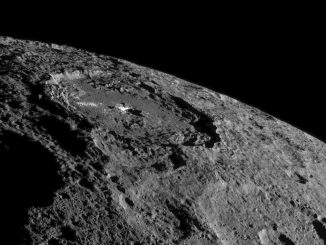
New views of dwarf planet Ceres as Dawn moves higher
The brightest area on Ceres stands out amid shadowy, cratered terrain in a dramatic new view from NASA’s Dawn spacecraft, taken as it looked off to the side of the dwarf planet. Dawn snapped this image from about 920 miles (1,480 kilometres) above Ceres in its fifth science orbit, in which the angle of the Sun was different from that in previous orbits.
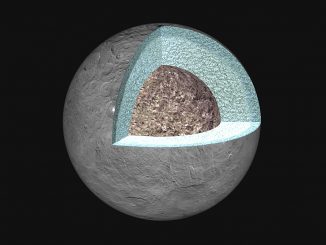
Dawn’s gravity data probes interior of dwarf planet Ceres
By tracking subtle changes in the motion of NASA’s Dawn spacecraft, scientists have mapped the variations in Ceres’ gravity for the first time, providing clues to the dwarf planet’s internal structure. The new data suggest that Ceres has a weak interior, and that water and other light materials partially separated from rock during a heating phase early in its history.
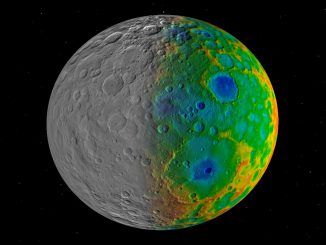
The case of the missing Ceres craters
Ceres is covered in countless small, young craters, but none are larger than 175 miles (280 kilometres) in diameter. To scientists, this is a huge mystery, given that the dwarf planet must have been hit by numerous large asteroids during its 4.5 billion-year lifetime. Where did all the large craters go?
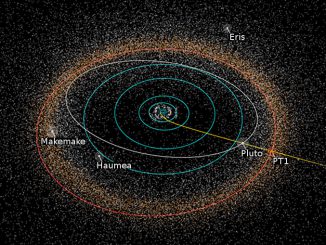
New Horizons receives mission extension to Kuiper Belt, Dawn to remain at Ceres
Following its historic first-ever flyby of Pluto, NASA’s New Horizons mission has received the green light to fly onward to an object deeper in the Kuiper Belt, known as 2014 MU69. The spacecraft’s planned rendezvous with the ancient object — considered one of the early building blocks of the solar system — is 1 January 2019.

Unexpected changes of bright spots on Ceres discovered
New and very precise observations using the HARPS spectrograph with the ESO 3.6-metre telescope in Chile have not only detected the motion of the enigmatic bright spots on Ceres due to the dwarf planet’s rotation about its axis, but also found unexpected additional variations suggesting that the material of the spots is volatile and evaporates in sunlight.

New details on Ceres seen in Dawn images
Features on dwarf planet Ceres that piqued the interest of scientists throughout 2015 stand out in exquisite detail in the latest images from NASA’s Dawn spacecraft, which recently reached its lowest-ever altitude at Ceres. Dawn took these images near its current altitude of 240 miles (385 kilometers) between 19 and 23 December 2015.

New clues to dwarf planet Ceres’ bright spots and origins
The surface of Ceres, whose average diameter is 584 miles, is generally dark and similar in brightness to fresh asphalt. But the dwarf planet does possess 130 mysterious bright areas associated with impact craters that new research suggests are salt-rich areas left behind when briny water-ice from a subsurface layer sublimated in the past.
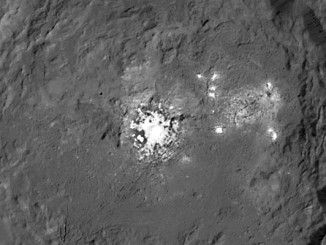
Ceres’ bright spots seen in striking new detail
The brightest spots on the dwarf planet Ceres gleam with mystery in new views delivered by NASA’s Dawn spacecraft. These closest-yet views of 57-mile-wide impact crater Occator, with a resolution of 450 feet (140 metres) per pixel, give scientists a deeper perspective on these very unusual features — though the precise nature of the spots remains unknown.

Dawn sends sharper scenes from dwarf planet Ceres
NASA’s Dawn spacecraft has delivered the closest-yet views of Ceres, showing the dwarf planet’s surface in unprecedented detail — including the small world’s mysterious four-mile-high conical mountain. At its current orbital altitude, Dawn takes 11 days to capture and return images of Ceres’ whole surface at a resolution of 450 feet (140 metres) per pixel.
